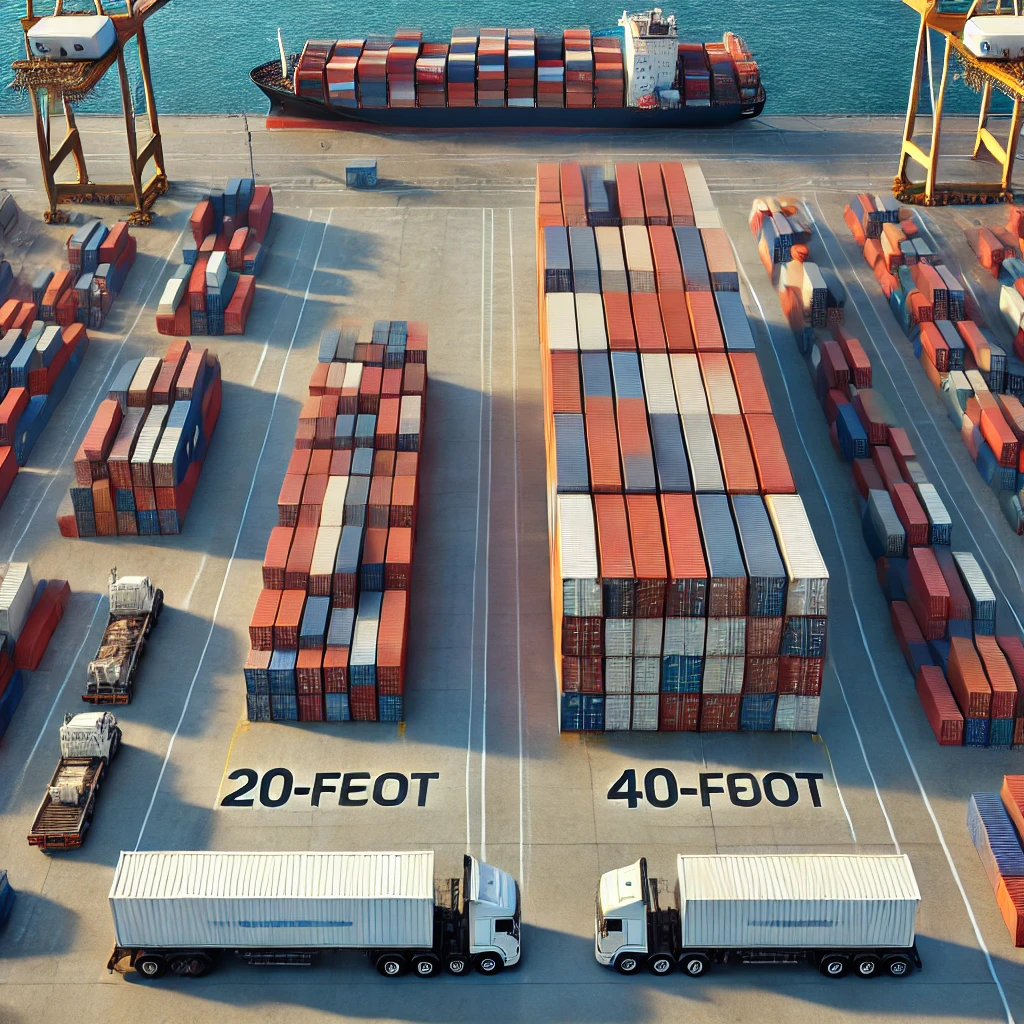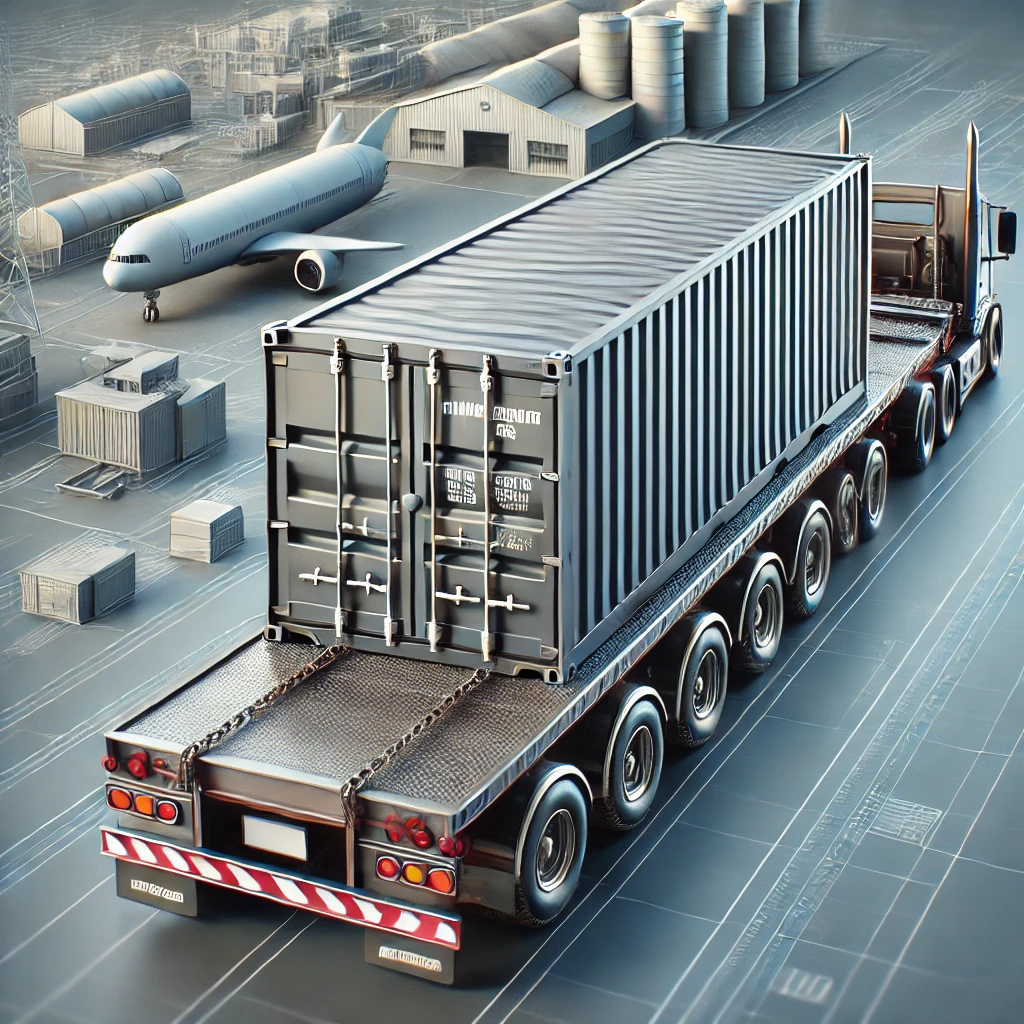Exploring 20 ft Shipping Container Dimensions in Detail
Understanding the exact dimensions and capabilities of a 20 ft shipping container is crucial for businesses looking to optimize their supply chains and storage needs. In this guide, we’ll explore its dimensions, weight capacity, variations, and practical applications in different industries.

Standard 20 ft Shipping Container Dimensions
A 20 ft shipping container follows the ISO (International Organization for Standardization) regulations, which ensures compatibility with trucks, ships, and trains. Below is a detailed breakdown:
1. External Dimensions (ISO Standards)
Measurement | Feet | Meters |
Length | 20 ft | 6.06 m |
Width | 8 ft | 2.44 m |
Height | 8 ft 6 in | 2.59 m |
These external dimensions allow efficient stacking on ships and easy transport by rail and road.
2. Internal Dimensions
Measurement | Feet | Meters |
Length | 19 ft 4 in | 5.89 m |
Width | 7 ft 8 in | 2.35 m |
Height | 7 ft 10 in | 2.39 m |
The internal space is slightly reduced due to the container’s wall thickness, but it still offers ample storage and shipping capacity.
3. Door Opening Dimensions
Measurement | Feet | Meters |
Width | 7 ft 8 in | 2.34 m |
Height | 7 ft 5 in | 2.28 m |
A wide door opening allows for easy loading and unloading of goods, especially for palletized shipments.
4. Weight Capacity & Volume
Specification | Measurement |
Maximum Gross Weight | 67,200 lbs (30,480 kg) |
Tare Weight (Empty Container) | 4,850 lbs (2,200 kg) |
Payload Capacity | 62,350 lbs (28,280 kg) |
Internal Volume | 1,170 cubic feet (33.2 cubic meters) |
This means a 20 ft shipping container can hold over 60,000 lbs of cargo while offering more than 1,100 cubic feet of space.

Types of 20 ft Shipping Containers
While the standard 20 ft dry container is the most widely used, there are various specialized versions designed for different applications:
- 20 ft Dry Storage Container – The standard weatherproof container used for general cargo.
- 20 ft High Cube Container – Offers an extra foot in height (9 ft 6 in) for additional storage.
- 20 ft Refrigerated (Reefer) Container – Features a temperature-controlled system for perishable goods.
- 20 ft Open-Top Container – Has a removable roof, ideal for oversized cargo.
- 20 ft Flat Rack Container – Designed for heavy machinery and large equipment, with collapsible sides.
Each container type caters to different industries, from food and beverage storage to construction and heavy-duty shipping.
Practical Uses of 20 ft Shipping Containers
A 20 ft container is an ideal solution for various industries, thanks to its compact size and versatility. Here are some practical applications:
✅ 1. International Shipping & Logistics
- Used for transporting goods worldwide via ships, trucks, and railways.
- Secure and weather-resistant, protecting cargo during transit.
- Perfect for intermodal transport, seamlessly moving between different modes.
✅ 2. On-Site Storage Solutions
- Businesses and individuals use these containers for temporary or permanent storage.
- Suitable for construction sites, warehouses, and retail businesses needing extra storage.
- Weatherproof and secure, protecting goods from theft and environmental damage.
✅ 3. Modular Construction & Housing
- Converted into offices, homes, pop-up shops, and mobile cafes.
- An eco-friendly and cost-effective solution for affordable housing.
- Easily modified with doors, windows, and insulation for livable spaces.
✅ 4. Disaster Relief & Military Use
- Used for mobile medical clinics, emergency shelters, and military command centers.
- Quick to transport and set up in disaster-stricken areas.
- Secure and easily modified for different needs.
✅ 5. Agriculture & Cold Storage
- Refrigerated versions (reefers) are widely used in the food industry.
- Keeps fresh produce, seafood, and dairy products at optimal temperatures.
- Also used for vertical farming and hydroponic agriculture.

20 ft vs. 40 ft Containers: Key Differences
When deciding between a 20 ft and 40 ft container, consider the following comparison:
Feature | 20 ft Container | 40 ft Container |
External Length | 20 ft (6.06 m) | 40 ft (12.19 m) |
Internal Volume | 1,170 cu ft | 2,350 cu ft |
Payload Capacity | 62,350 lbs | 59,200 lbs |
Weight (Tare) | 4,850 lbs | 8,500 lbs |
Best For | Small to medium cargo | Large cargo shipments |
A 20 ft container is easier to transport and cheaper to handle, while a 40 ft container is ideal for bulkier cargo shipments.
Choosing the Right 20 ft Container for Your Needs
When selecting a 20 ft shipping container, consider the following:
🔹 New vs. Used – New containers provide better longevity, while used containers are budget-friendly.
🔹 Cargo Type – Consider standard, refrigerated, or open-top containers based on your cargo needs.
🔹 Shipping vs. Storage – If using it for storage, modifications like ventilation, shelving, or insulation might be necessary.
🔹 Compliance & Certifications – Ensure the container meets ISO and CSC (Container Safety Convention) standards for global shipping.

Final Thoughts
The 20 ft shipping container is an essential tool in global trade, offering efficient, cost-effective, and flexible solutions for shipping, storage, and construction. Whether you’re a business owner, logistics professional, or contractor, understanding its dimensions, weight capacity, and applications helps in making informed purchasing decisions. 🚛📦
